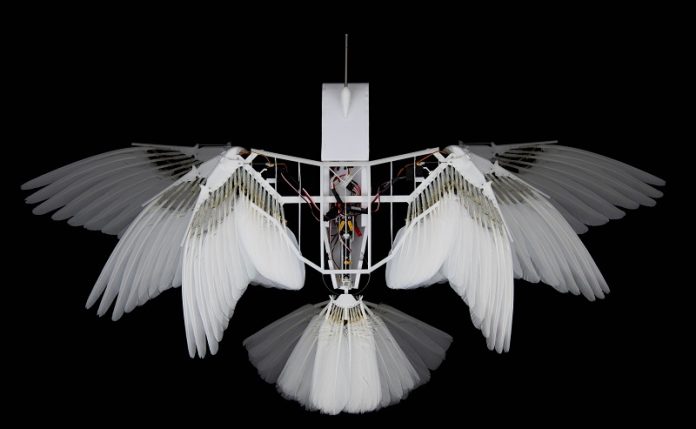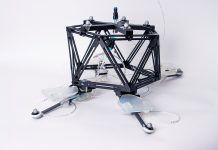
Have you ever wondered why airplanes have a vertical tail?
It helps stabilize their flight.
However, flying without a vertical tail would save a lot of energy, which is why the aviation industry has been trying to achieve it—but without much success. Birds, on the other hand, fly without a vertical tail.
So how do they do it?
Professor David Lentink, a biomimetics expert at the University of Groningen, has created a robotic bird with real pigeon feathers to find the answer. His robotic model, called PigeonBot II, mimics the way birds adjust the shape of their wings and tails during flight.
The study was recently published in Science Robotics.
Birds constantly change the shape of their wings and tails, which helps them stay stable without needing a vertical tailfin.
Lentink and his team designed a robotic bird that does the same. The robot has nine tiny motors that move the feathers, allowing the wings and tail to adjust their shape in real time. These movements are controlled by an algorithm that works like a bird’s natural reflexes.
This idea dates back to 1929, when German scientist Franz Groebbels suggested that birds fly like “automatic airplanes,” adjusting their wings and tails instinctively. Now, almost a century later, PigeonBot II proves that theory. The robot was successfully tested in a wind tunnel and even flew autonomously outdoors.
PigeonBot II doesn’t just help us understand how birds fly—it could change how airplanes are designed. By learning from birds, engineers might build airplanes without vertical tails, making them much more fuel-efficient.
Lentink’s work could bring concepts like Airbus’s futuristic tail-less plane design closer to reality. These planes would not only save fuel but also have smaller radar signatures, which could make them ideal for military use, such as stealth jet fighters.
The robotic bird’s ability to adjust its feathers like a real bird shows how nature can inspire smarter, more efficient technology.
With this breakthrough, we’re one step closer to designing airplanes that are lighter, greener, and more fuel-efficient, all thanks to lessons learned from birds in flight.



